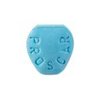 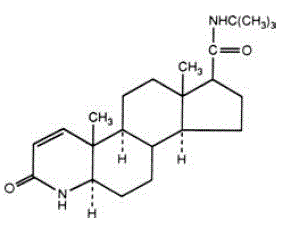 | Active Ingredient: Finasteride Proscar is used for treating urinary problems caused by an enlarged prostate gland (benign prostatic hyperplasia). |
Understanding Benign Prostatic Hyperplasia (BPH)
Benign prostatic hyperplasia (BPH) is a condition that affects millions of men worldwide, particularly as they age. The prostate gland, which is responsible for producing a fluid that nourishes and transports sperm, tends to enlarge over time. When the prostate grows too large, it begins to press on the urethra, the tube that carries urine from the bladder out of the body. This pressure can lead to a variety of urinary symptoms, including difficulty starting urination, a weak urine stream, and frequent urges to urinate, especially at night.
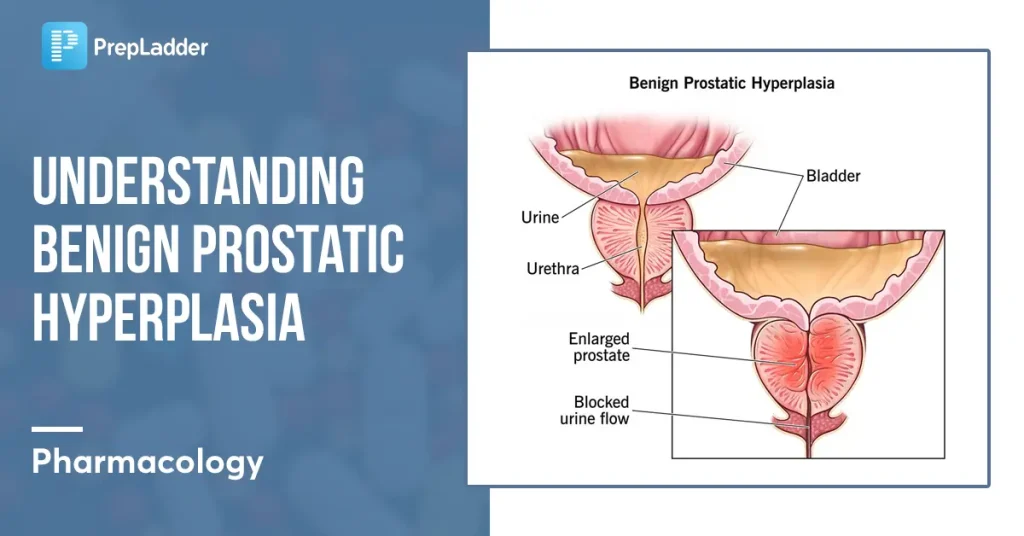
BPH is a non-cancerous condition, but its impact on a man’s quality of life can be profound. Left untreated, BPH can lead to complications such as urinary tract infections, bladder stones, and in severe cases, kidney damage. It is one of the most common conditions affecting men over the age of 50, and by age 60, up to 50% of men will experience some degree of BPH. By the age of 85, this number rises to 90%.
Early detection and treatment of BPH are essential in managing the symptoms and preventing complications. Over the years, several treatment options have been developed, ranging from lifestyle changes and medications to minimally invasive procedures and surgery. One of the most widely prescribed medications for BPH is Proscar (finasteride), a drug that has been shown to reduce the size of the prostate gland and alleviate the symptoms of BPH.
This story will explore how Proscar works, its effectiveness, potential side effects, and what patients can expect when undergoing treatment. By understanding the role Proscar plays in managing BPH, men can make informed decisions about their treatment options and take control of their health.

Symptoms of Enlarged Prostate
BPH can manifest in various ways, depending on the severity of the prostate enlargement and how much pressure it exerts on the urethra. Some men experience only mild symptoms, while others may find that their daily life is significantly affected by the condition. The most common symptoms of BPH include:
- Difficulty starting urination: Men with BPH often find that they need to strain to begin urinating, and even when they do, the flow of urine may be weak or intermittent.
- Frequent urination: As the enlarged prostate presses on the bladder, it reduces the bladder’s capacity to hold urine. This can lead to frequent trips to the bathroom, especially at night (a condition known as nocturia).
- Incomplete bladder emptying: Even after urinating, men with BPH may feel as though their bladder is not completely empty. This can increase the frequency of urination and the urgency to go again soon after.
- Urgency to urinate: The feeling of needing to urinate can become sudden and intense, making it difficult to delay or control the urge.
- Weak urine stream: The prostate’s compression on the urethra can result in a weak or slow flow of urine, making it difficult to empty the bladder quickly.
- Stopping and starting during urination: Some men may find that their urine stream stops and starts during the process, leading to frustration and discomfort.
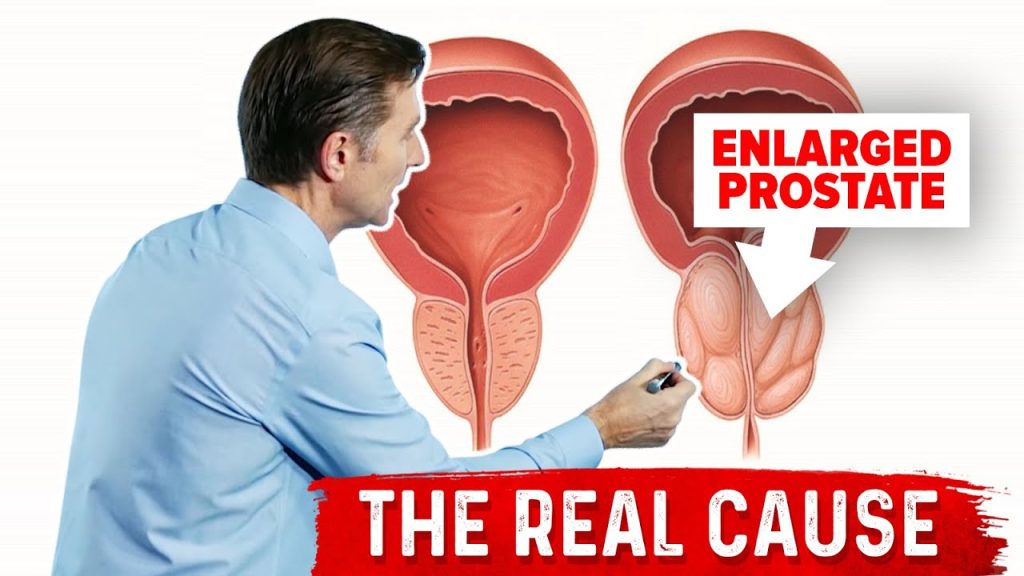
If left untreated, BPH can lead to complications, including acute urinary retention (the inability to urinate), urinary tract infections, and damage to the bladder or kidneys. Therefore, men who experience any of these symptoms should seek medical advice to determine the best course of treatment.
Diagnostic Tests for BPH
Doctors typically use a combination of medical history, physical exams, and diagnostic tests to confirm BPH. Some of the most common diagnostic tools include:
- Digital rectal exam (DRE): A doctor inserts a gloved finger into the rectum to feel the size and shape of the prostate. This is a quick and simple exam that helps determine whether the prostate is enlarged.
- Prostate-specific antigen (PSA) test: A blood test that measures the level of PSA, a protein produced by the prostate. Elevated levels of PSA may indicate prostate enlargement or other conditions, such as prostate cancer.
- Ultrasound: An ultrasound of the bladder and prostate can help visualize the size of the prostate and determine how much it is affecting urinary flow.
- Uroflowmetry: This test measures the strength and speed of the urine stream. A reduced flow rate can indicate that the prostate is obstructing the urethra.
- Post-void residual (PVR) test: This test measures how much urine remains in the bladder after urination. A large amount of residual urine may suggest that BPH is preventing the bladder from fully emptying.
Overview of Proscar (Finasteride)
Proscar, also known by its generic name finasteride, is a prescription medication commonly used to treat BPH. Developed by Merck & Co. and approved by the FDA in 1992, Proscar has become a key component in the management of BPH due to its ability to shrink the enlarged prostate gland and improve urinary symptoms.
How Proscar Works
Proscar belongs to a class of medications known as 5-alpha-reductase inhibitors. The primary cause of prostate enlargement in BPH is an overproduction of dihydrotestosterone (DHT), a potent form of testosterone that stimulates prostate growth. Proscar works by inhibiting the enzyme 5-alpha-reductase, which is responsible for converting testosterone into DHT. By reducing DHT levels in the prostate, Proscar helps shrink the gland over time, relieving the pressure on the urethra and improving urinary function.
Unlike alpha-blockers, another class of medications used to treat BPH, Proscar does not provide immediate symptom relief. Instead, it works gradually over several months, reducing the size of the prostate and preventing further enlargement. For many men, Proscar is a long-term solution that not only improves symptoms but also reduces the risk of complications such as acute urinary retention and the need for surgery.
Proscar vs. Other BPH Medications
There are several treatment options available for BPH, and the choice of treatment often depends on the severity of the symptoms and the size of the prostate. Alpha-blockers, such as tamsulosin (Flomax), relax the muscles around the bladder and prostate, providing rapid relief of urinary symptoms. However, they do not reduce the size of the prostate or address the underlying cause of BPH.

In contrast, Proscar works by directly targeting the cause of prostate enlargement, making it an ideal choice for men with significantly enlarged prostates. It is often used in combination with alpha-blockers for more comprehensive management of symptoms.
Clinical Evidence: Proscar’s Effectiveness in Treating BPH
Numerous clinical trials have demonstrated the effectiveness of Proscar in reducing prostate size and improving urinary symptoms. One of the most significant studies is the Proscar Long-Term Efficacy and Safety Study (PLESS), a multicenter, randomized, placebo-controlled trial involving over 3,000 men with moderate to severe BPH.
In the PLESS study, men who took Proscar for four years experienced a significant reduction in prostate volume, averaging around 20%. This reduction in size was accompanied by improvements in urinary flow rate and a decrease in the severity of BPH symptoms. Moreover, men taking Proscar had a significantly lower risk of developing acute urinary retention and requiring surgery compared to those taking a placebo.
Other studies have confirmed these findings, showing that Proscar can provide long-term relief from BPH symptoms and reduce the need for invasive treatments. While it may take several months to achieve noticeable improvements, the long-term benefits of Proscar make it a valuable option for men with enlarged prostates.
How Proscar is Administered
Proscar is typically prescribed at a dose of 5 mg per day, taken orally with or without food. It is important to note that Proscar is not a quick fix for BPH symptoms. Because the medication works by gradually reducing prostate size, it may take several months before patients begin to notice improvements in their symptoms.
In some cases, doctors may adjust the dosage based on the patient’s response to the medication. Regular follow-up appointments are essential to monitor progress and ensure that Proscar is working effectively. During these visits, doctors may perform tests to measure prostate size, urinary flow rate, and PSA levels.

For many men, Proscar is a long-term treatment that requires ongoing use to maintain its benefits. However, some patients may eventually be able to reduce their dosage or discontinue the medication if their symptoms improve significantly.
Impact on Prostate Cancer Prevention
In addition to treating BPH, Proscar has been studied for its potential role in prostate cancer prevention. The Prostate Cancer Prevention Trial (PCPT) found that men who took finasteride had a reduced risk of developing prostate cancer compared to those who took a placebo. However, there was also an increased risk of developing high-grade prostate cancer in some men taking the drug. As a result, the use of Proscar for prostate cancer prevention remains a topic of debate, and men should discuss the risks and benefits with their doctors.
Side Effects and Risks
While Proscar (finasteride) has proven effective in treating BPH by reducing prostate size and alleviating symptoms, like all medications, it comes with potential side effects and risks. For most men, the benefits of Proscar outweigh its downsides, but it’s essential to understand what might occur during treatment and how to mitigate these side effects.
Common Side Effects
The majority of Proscar users experience mild to moderate side effects, particularly during the early stages of treatment. Some of the more common side effects include:
- Sexual Dysfunction: One of the most frequently reported side effects of Proscar is sexual dysfunction. This can manifest as a decreased libido, difficulty achieving or maintaining an erection (erectile dysfunction), or reduced ejaculatory volume. Studies suggest that between 3-5% of men taking Proscar may experience these issues. In most cases, these symptoms improve with continued use of the drug or after discontinuation.
- Decreased Ejaculate Volume: Because Proscar works by reducing the size of the prostate, it can also decrease the volume of semen produced during ejaculation. While this may be concerning for some men, it does not generally affect sexual pleasure or fertility in a significant way.
- Breast Tenderness and Enlargement (Gynecomastia): Some men report breast tenderness or even mild enlargement of breast tissue. While rare, it’s essential to monitor for any abnormal changes in breast tissue and discuss them with a doctor.
- Dizziness and Weakness: A small percentage of men may experience dizziness or feelings of weakness. These side effects are typically mild and temporary.
Serious Risks
In addition to the common side effects, Proscar has been linked to more serious risks, though these are less frequent.
- Increased Risk of High-Grade Prostate Cancer: One of the more controversial risks associated with Proscar is the potential for an increased risk of high-grade prostate cancer. The Prostate Cancer Prevention Trial (PCPT) found that while finasteride reduced the overall risk of prostate cancer, a small percentage of men developed more aggressive forms of the disease. This has led to debates about the long-term use of Proscar and the need for ongoing monitoring of PSA levels during treatment.
- Depression and Mental Health Issues: Some reports suggest that Proscar may be linked to an increased risk of depression and anxiety. While this side effect is relatively rare, it is essential for men taking Proscar to monitor their mental health and seek help if they notice mood changes or depressive symptoms.
- Breast Cancer in Men: There have been a few case reports of men developing breast cancer while taking Proscar. While this is extremely rare, any unusual breast changes, such as lumps or discharge, should be reported to a healthcare provider immediately.
Post-Finasteride Syndrome
A small number of men who stop taking Proscar report experiencing persistent side effects, a condition known as post-finasteride syndrome (PFS). These symptoms may include continued sexual dysfunction, depression, anxiety, and cognitive difficulties, even after discontinuing the medication. The exact cause of PFS is not fully understood, and it is a topic of ongoing research. However, it is important for patients to be aware of this potential risk and to weigh it against the benefits of treatment.
Mitigating Side Effects
For most men, side effects are manageable and may lessen over time as the body adjusts to the medication. Some strategies for reducing or managing side effects include:
- Consulting with a Doctor: Regular check-ups and open communication with a healthcare provider can help identify side effects early and allow for adjustments in dosage or additional treatments.
- Maintaining a Healthy Lifestyle: Engaging in regular exercise, following a balanced diet, and reducing alcohol and caffeine intake can improve overall health and may help mitigate some of the side effects of Proscar.
- Exploring Combination Therapy: In some cases, combining Proscar with other medications, such as alpha-blockers, may provide symptom relief while reducing the need for high doses of finasteride.
Patient Experiences: Real-Life Stories of Proscar Treatment
Every patient’s experience with Proscar treatment is unique, and understanding the real-world stories of men who have used the medication can provide valuable insights into its impact on quality of life. Here, we explore several case studies that highlight both the benefits and challenges of Proscar treatment for BPH.
Case Study 1: John’s Journey to Symptom Relief
John, a 62-year-old retired engineer, began experiencing symptoms of BPH in his late 50s. He noticed that his nightly trips to the bathroom were increasing, sometimes up to five times a night. During the day, he struggled with urgency and a weak urine stream, which started affecting his social life.

After consulting his doctor, John was diagnosed with BPH and prescribed Proscar. The first few months on the medication were challenging, as he experienced some side effects, including a reduced libido and mild dizziness. However, after about six months, John began noticing significant improvements in his symptoms. His nighttime bathroom visits decreased to one or two times, and his urine flow improved. Although his sexual side effects persisted to some degree, John felt that the trade-off was worth it for the relief from his BPH symptoms.
“It took a while, but eventually I started to feel like myself again. The constant worry about finding a bathroom or waking up in the middle of the night was gone, and that made a huge difference in my life.”
Case Study 2: Michael’s Struggle with Side Effects
Michael, a 55-year-old business owner, started taking Proscar after his BPH symptoms became too difficult to manage. Within a few weeks, he noticed improvements in his urinary flow, but he also experienced significant sexual dysfunction, including erectile difficulties and a lack of interest in intimacy. These side effects started to affect his confidence and relationship with his partner.
After discussing his concerns with his urologist, Michael was switched to a combination therapy of Proscar and an alpha-blocker. While his sexual side effects did not disappear completely, the addition of the alpha-blocker helped reduce his BPH symptoms further, allowing him to lower his Proscar dosage. Over time, Michael and his doctor found a balance that minimized the side effects while providing symptom relief.
“It was frustrating at first because the side effects really impacted my life. But with my doctor’s help, we found a way to manage the symptoms without sacrificing my quality of life too much.”
Case Study 3: The Long-Term User
David, a 70-year-old retired teacher, has been taking Proscar for over 10 years. Diagnosed with BPH in his late 50s, David started treatment early to prevent the progression of his symptoms. Over the years, Proscar has helped keep his prostate size under control, and he has avoided more invasive treatments like surgery.
David experienced some mild side effects initially, but they subsided after a few months. He continues to monitor his PSA levels regularly, and his urologist has been pleased with his progress. David credits Proscar with allowing him to maintain an active lifestyle without the constant worry about his prostate health.
“I’ve been on Proscar for so long that it’s just become part of my routine. It’s helped me avoid surgery and live a pretty normal life. I feel lucky that I found something that works.”
Lifestyle Changes and Proscar: Enhancing Treatment with Healthy Habits
While Proscar is an effective treatment for BPH, many doctors recommend combining medication with lifestyle changes to enhance its effectiveness and improve overall prostate health. Adopting a healthy lifestyle can help manage symptoms, reduce the risk of complications, and improve long-term outcomes.
Dietary Recommendations for Prostate Health
Research suggests that certain dietary habits may promote prostate health and reduce the symptoms of BPH. Incorporating these foods into your diet may help enhance the effects of Proscar:
- Foods Rich in Omega-3 Fatty Acids: Omega-3s, found in fatty fish like salmon, mackerel, and sardines, have anti-inflammatory properties that may help reduce prostate inflammation.
- Fruits and Vegetables: A diet high in fruits and vegetables, particularly those rich in antioxidants like tomatoes (which contain lycopene), may protect against prostate issues and improve urinary function.
- Nuts and Seeds: Zinc is an essential mineral for prostate health, and nuts like pumpkin seeds are rich in zinc. Including these in your diet may support prostate function.
- Green Tea: Some studies suggest that green tea has anti-inflammatory properties that could benefit prostate health. It may also help alleviate urinary symptoms associated with BPH.
Conversely, avoiding or reducing certain foods and drinks can help minimize symptoms:
- Caffeine and Alcohol: Both caffeine and alcohol can irritate the bladder and exacerbate urinary symptoms, so it’s a good idea to limit their intake, especially in the evening.
- Spicy Foods: For some men, spicy foods can irritate the bladder and worsen urinary symptoms. If you notice a correlation, try cutting back on spices.
Exercise and Physical Activity
Regular physical activity can improve overall health, enhance urinary function, and potentially reduce the severity of BPH symptoms. Studies have shown that men who exercise regularly are less likely to experience severe BPH symptoms. Recommended activities include:
- Aerobic Exercise: Activities such as walking, swimming, or cycling can improve cardiovascular health and help maintain a healthy weight, which is crucial for managing BPH.
- Pelvic Floor Exercises (Kegels): Strengthening the pelvic floor muscles can help improve bladder control and reduce urinary urgency.
- Yoga and Stretching: Gentle stretching exercises, such as yoga, can help reduce tension in the pelvic region and improve urinary flow.
Managing Stress
Stress can exacerbate BPH symptoms by causing tension in the pelvic muscles and increasing the frequency of urination. Managing stress through relaxation techniques such as deep breathing, meditation, or mindfulness can help reduce the intensity of symptoms.
Combining Proscar with Lifestyle Changes
For many men, combining Proscar with these lifestyle changes can lead to better overall outcomes. While Proscar works to reduce prostate size and relieve urinary symptoms, a healthy lifestyle can support the medication’s effectiveness and improve long-term prostate health.
Proscar vs. Other Medications for Enlarged Prostate
When considering treatment options for BPH, it’s essential to compare Proscar with other medications commonly prescribed for the condition. The choice of treatment often depends on the severity of symptoms, the size of the prostate, and the patient’s overall health and preferences.
Proscar (Finasteride) vs. Alpha-Blockers
Alpha-blockers, such as tamsulosin (Flomax) and alfuzosin (Uroxatral), are another class of medications frequently used to treat BPH. While both Proscar and alpha-blockers are effective, they work in different ways and are suitable for different types of patients.
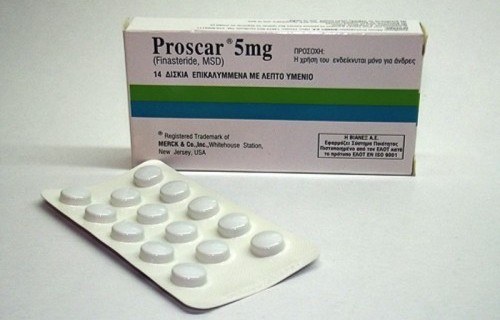
- Mechanism of Action: Alpha-blockers work by relaxing the smooth muscles in the prostate and bladder neck, allowing for easier urine flow. Unlike Proscar, they do not shrink the prostate. Instead, they provide rapid relief of urinary symptoms within a few days.
- Time to Effectiveness: While alpha-blockers act quickly to relieve symptoms, Proscar takes several months to reduce prostate size and improve symptoms. This makes alpha-blockers a good choice for men seeking immediate symptom relief, while Proscar is more suitable for long-term treatment.
- Side Effects: Alpha-blockers are generally well-tolerated but can cause side effects such as dizziness, fatigue, and low blood pressure. In contrast, Proscar is more likely to cause sexual side effects, such as decreased libido and erectile dysfunction.
Combination Therapy
For men with moderate to severe BPH, doctors often prescribe a combination of Proscar and an alpha-blocker. This approach allows for immediate symptom relief from the alpha-blocker while the Proscar works over time to shrink the prostate and prevent further enlargement. Studies have shown that combination therapy can be highly effective in reducing symptoms and preventing the need for surgery.
Proscar vs. Surgical Interventions
In cases where medications like Proscar or alpha-blockers are not sufficient to manage symptoms, surgery may be considered. The most common surgical procedure for BPH is transurethral resection of the prostate (TURP), in which part of the prostate is removed to relieve obstruction.
- Effectiveness: Surgery provides immediate and significant relief from BPH symptoms and is generally considered a definitive treatment. However, it carries risks such as bleeding, infection, and sexual dysfunction.
- Recovery: Surgical interventions require a recovery period, while Proscar and other medications allow for continuous, long-term management without the need for invasive procedures.
The Future of BPH Treatment: Emerging Research and Proscar Alternatives
As research into BPH continues, new treatment options are being developed that could further improve outcomes for men with enlarged prostate glands. Proscar remains a key player in the treatment of BPH, but emerging therapies and ongoing research may expand the range of available treatments.
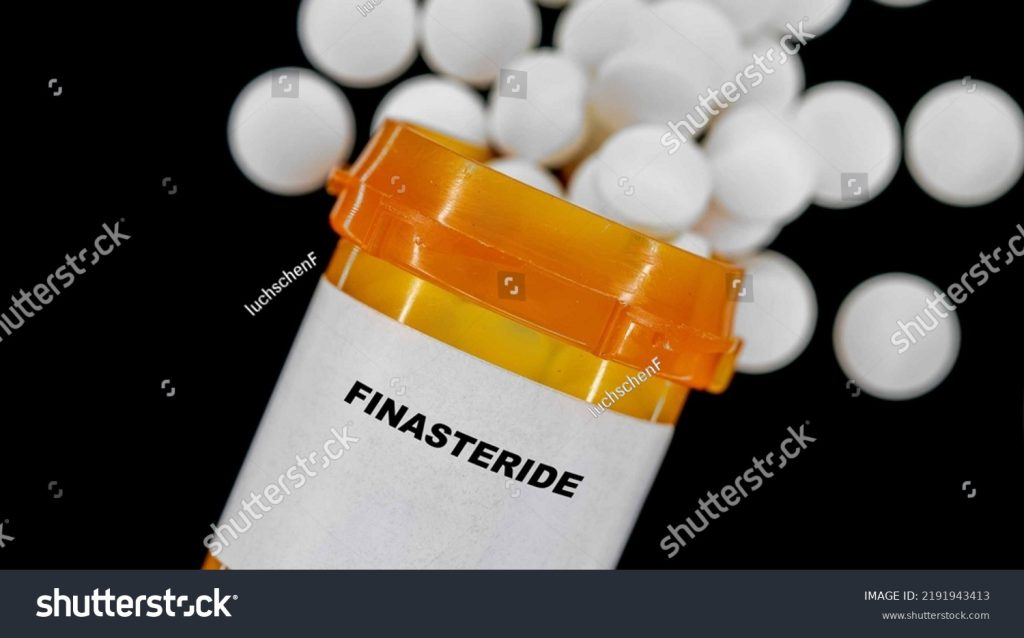
New Medications and Therapies
Several new medications are under investigation for their ability to treat BPH with fewer side effects or more rapid relief of symptoms. For example:
- Phosphodiesterase-5 Inhibitors (PDE5 Inhibitors): Drugs like tadalafil (Cialis), which are commonly used to treat erectile dysfunction, have also shown promise in improving BPH symptoms. These medications work by relaxing the smooth muscles in the prostate and bladder neck, similar to alpha-blockers, but may also enhance sexual function.
- Minimally Invasive Procedures: Newer, less invasive treatments for BPH, such as UroLift and Rezum, are gaining popularity. These procedures use mechanical implants or steam therapy to reduce prostate tissue, providing symptom relief without the need for major surgery.
Proscar’s Role in the Future of BPH Management
While new treatments are being developed, Proscar will likely continue to play a significant role in managing BPH, particularly for men with large prostate glands who need long-term reduction in prostate size. Ongoing research may also lead to refinements in the use of Proscar, such as identifying the best candidates for treatment and reducing the incidence of side effects.
The Role of Proscar in Managing BPH
Proscar has been a valuable tool in the management of BPH for decades, offering a long-term solution for men with enlarged prostate glands. By reducing prostate size and improving urinary symptoms, Proscar allows men to regain control of their lives and avoid the complications associated with untreated BPH.
While Proscar is not without its side effects, most men tolerate the medication well, and the benefits often outweigh the risks. Combining Proscar with lifestyle changes and other treatments, such as alpha-blockers, can further enhance its effectiveness and improve quality of life.
As research into BPH continues and new treatments emerge, Proscar will remain an important option for men seeking relief from the symptoms of an enlarged prostate. By working closely with their healthcare providers, men can make informed decisions about their treatment and find the best approach to managing BPH.
Tags:
Proscar treatment, Finasteride for BPH, Enlarged prostate treatment, Benign prostatic hyperplasia, BPH medication, Proscar side effects, Proscar effectiveness, Proscar vs alpha-blockers, BPH symptoms, 5-alpha-reductase inhibitors, Shrinking prostate, Urinary symptoms in men, Proscar dosage, Proscar clinical trials, Post-finasteride syndrome, BPH lifestyle changes, Proscar patient stories, Long-term BPH management, Proscar sexual dysfunction, PSA levels and Proscar, Proscar, BPH treatment, Enlarged prostate, Finasteride, Men’s health, Prostate health, Urinary symptoms, Alpha-blockers, Prostate medication, Urology treatments, Benign prostatic hyperplasia, Male urinary health, Prostate care, Minimally invasive BPH treatment, Prostate cancer risk, Medical case studies, Chronic health management
INDICATIONS
Proscar is used for treating urinary problems caused by an enlarged prostate gland (benign prostatic hyperplasia, BPH). It is also used to lower the risk of needing surgery to treat BPH. It may be used with another medicine (doxazosin) to lower the risk of worsening BPH. Proscar is a type of steroid reductase inhibitor. It works by reducing the amount of the hormone dihydrotestosterone (DHT) in the body. This makes the prostate gland smaller, which helps to relieve urinary problems.
INSTRUCTIONS
Use Proscar as directed by your doctor.
- Take Proscar by mouth with or without food.
- Continue to take Proscar even if you feel well. Do not miss any dose.
- Using Proscar at the same time each day will help you remember to take it.
- If you miss a dose of Proscar, take it as soon as possible. If it is almost time for your next dose, skip the missed dose and go back to your regular dosing schedule. Do not take 2 doses at once
Ask your health care provider any questions you may have about how to use Proscar.
STORAGE
Store Proscar at room temperature, below 86 degrees F (30 degrees C). Store away from heat, moisture, and light. Do not store in the bathroom. Keep Proscar out of the reach of children and away from pets.
MORE INFO:
Active Ingredient: Finasteride.
Do NOT use Proscar if:
- you are allergic to any ingredient in Proscar
- the patient is a woman or a child.
Contact your doctor or health care provider right away if any of these apply to you.
Some medical conditions may interact with Proscar. Tell your doctor or pharmacist if you have any medical conditions, especially if any of the following apply to you:
- if you are taking any prescription or nonprescription medicine, herbal preparation, or dietary supplement
- if you have allergies to medicines, foods, or other substances
- if you have a narrowing or blockage in the urinary tract, prostate cancer, nerve or muscle problems of the bladder, a bladder infection, severe trouble urinating, or if you are unable to urinate
- if you have a history of increased serum prostate-specific antigen (PSA) levels, abnormal liver function tests, or liver problems.
Some medicines may interact with Proscar. However, no specific interactions with Proscar are known at this time. Ask your health care provider if Proscar may interact with other medicines that you take. Check with your health care provider before you start, stop, or change the dose of any medicine.
Important safety information:
- Proscar may cause drowsiness or dizziness. These effects may be worse if you take it with alcohol or certain medicines. Use Proscar with caution. Do not drive or perform other possible unsafe tasks until you know how you react to it.
- Proscar may cause dizziness, lightheadedness, or fainting; alcohol, hot weather, exercise, or fever may increase these effects. To prevent them, sit up or stand slowly, especially in the morning. Sit or lie down at the first sign of any of these effects.
- Proscar may increase the risk of certain birth defects, including abnormal formation of genitalia in male fetuses. Proscar is coated to prevent contact with finasteride while handling undamaged tablets. The coating is not effective if the tablets are damaged, broken, or crushed. Women who are pregnant or may be pregnant should avoid contact with damaged, broken, or crushed tablets. If contact occurs, tell your doctor at once.
- Proscar may interfere with certain lab tests, including PSA tests. Be sure your doctor and lab personnel know you are taking Proscar.
- Proscar is for use by men only and should not be used by women or children.
All medicines may cause side effects, but many people have no, or minor, side effects.
Check with your doctor if any of these most common side effects persist or become bothersome:
Decreased sexual desire or ability.
Seek medical attention right away if any of these severe side effects occur:
Severe allergic reactions (rash; hives; itching; difficulty breathing; tightness in the chest; swelling of the mouth, face, lips, or tongue); breast enlargement, lumps, pain, or tenderness; nipple discharge; testicular pain.
This is not a complete list of all side effects that may occur. If you have questions about side effects, contact your health care provider.



